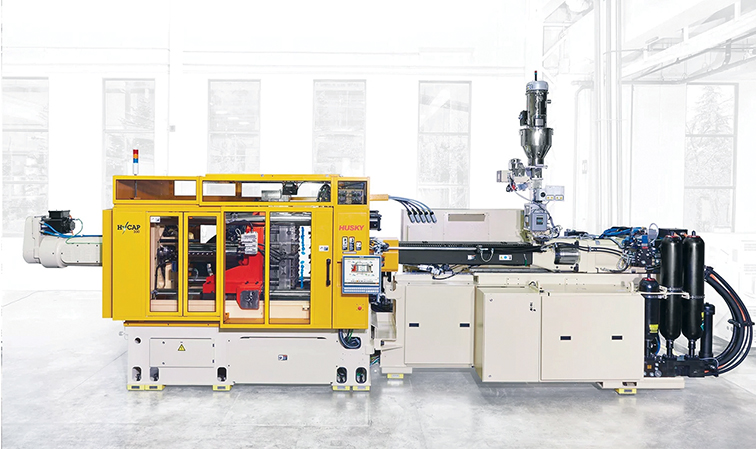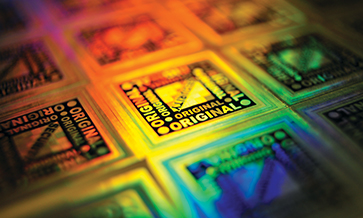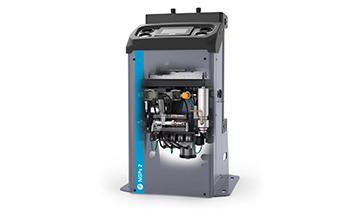In the ever-evolving landscape of beverage packaging, selecting the optimal manufacturing method for caps and closures is pivotal. The two predominant techniques – injection moulding and compression moulding – each offer unique advantages.
Compression moulding offers advantages in terms of initial investment, energy efficiency and simplicity. However, injection moulding stands out for its superior design capabilities, production flexibility and consistent quality.
When choosing between these methods, it is essential to consider your specific application requirements, including design complexity, production volume and cost constraints. Evaluating these factors will help you determine the most suitable manufacturing process for your caps and closures
Injection moulding
Injection moulding is a popular manufacturing process where molten plastic is injected into a mould under high pressure. Once the material cools and solidifies, it takes the shape of the mould.
This method is renowned for producing large volumes of uniform parts with intricate designs and precise details. Advantages of injection moulding include:
- It allows for the creation of parts with complex geometries, such as undercuts and intricate hinges. This is particularly beneficial for producing tethered caps that feature advanced functionalities like 180-degree openings and tactile feedback.
- The process eliminates the need for post-mould slitting and folding. This reduces machinery and labour costs and ensures that parts maintain a consistent quality throughout the production run.
- Since there is no slitting involved, the risk of micro-plastic contamination is minimized, making this method advantageous for applications requiring high purity, such as food and beverage packaging.
- Injection moulding allows for optimization of wall thickness, resulting in lighter closures that do not compromise performance. While closures from both technologies often weigh similarly, injection-moulded parts can be slightly lighter.
- Injection moulding machines have fewer moving parts and operate at slower speeds, leading to reduced maintenance needs and less downtime.
- Changing moulds in a machine is relatively quick, making it ideal for converters who need to switch between different closure types frequently. The process can also adapt to different raw materials and colours easily.
- Once optimized, injection moulding offers reliable and repeatable production, ensuring that each part meets desired specifications.

HyCAP-4 is the industry’s only fully integrated beverage closure injection molding system designed and built to work together for increased productivity, energy efficiency and ease of use.
Compression moulding
Compression moulding involves placing pre-heated plastic material into an open mould cavity. The mould is then closed, and pressure is applied to shape the material. After cooling, the mould opens, and the finished part is removed.
Unlike injection moulding, compression moulding typically uses single-cavity moulds on a carousel system, producing one part per cycle. Advantages of compression moulding include:
- Since compression moulding doesn’t require gates for material flow, the resulting parts have a cleaner surface finish without visible gate marks.
- The absence of a hot runner system in compression moulding allows for quicker colour changes, compared to injection moulding.
- Compression moulding operates at lower resin temperatures, reducing the energy required for heating and cooling the material.
- The initial investment for compression moulding equipment is generally lower than for injection moulding, making it an appealing option for newcomers to the closures industry.
Comparing processes
While compression moulding may have lower initial equipment costs, resin costs represent a significant portion of the total cost. Injection-moulded closures can be slightly lighter, potentially offsetting the higher resin costs.
Additionally, injection moulding eliminates the need for post-production steps like slitting and folding, which can further influence overall cost efficiency.
Injection moulding excels in design flexibility, allowing for intricate and innovative features that enhance consumer experience. Features such as tethered caps with advanced opening mechanisms and tactile cues are achievable with injection moulding but may be challenging with compression moulding.
Injection moulding generally offers superior efficiency due to its streamlined process. The absence of additional post-production steps and reduced risk of scrap and contamination contribute to its efficiency.
Compression moulding, on the other hand, may require more complex processes for slitting and quality control, particularly for tethered closures.
Injection moulding provides enhanced safety features due to its ability to create parts with smoother and more flexible geometries. This is particularly important for tethered caps, where the risk of sharp edges and potential injuries from compression-moulded closures is minimized with injection moulding.
(Courtesy: Husky Technologies)














